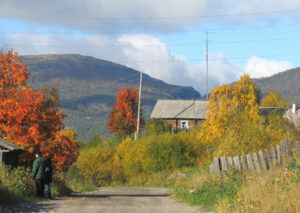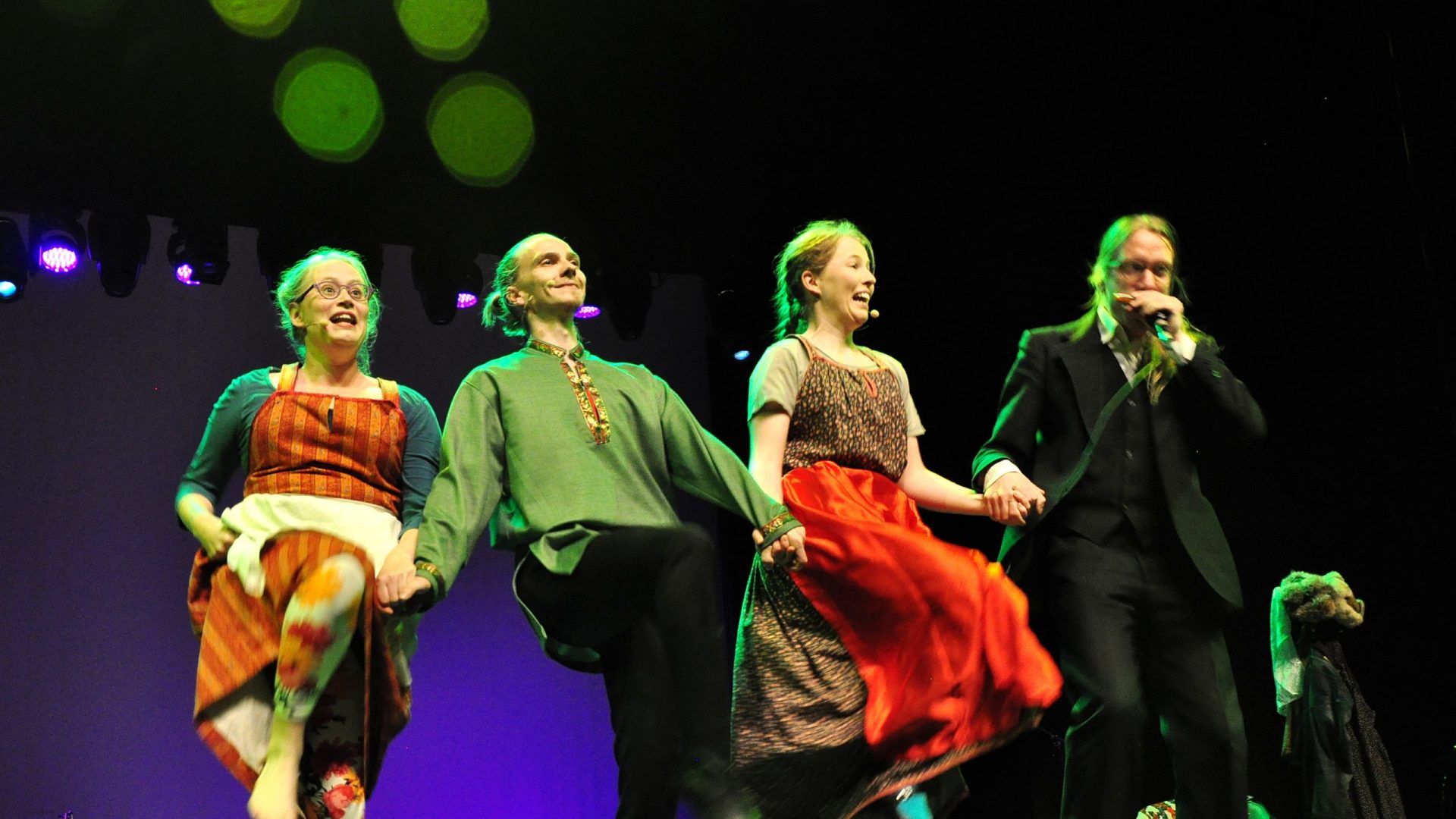Tracing the Yoiks
Research Expedition to Viena and the Kola Peninsula, September 16–22, 2006

Researchers and musicians from the Folk Music Project—Pekka Huttu-Hiltunen, Maari Kallberg, Salla Seppä, and Janne Seppänen—conducted a field trip to Viena Karelia and the Kola Peninsula from September 16 to 22, 2006. The research team also included Ljudmila Ivanova from the Institute of Language, Literature, and History at the Russian Academy of Sciences’ Karelian Research Centre, and an excellent local guide, Impi Kieleväinen, from Kemi.
During the week, the research group traveled through the villages of Viena Karelia (Kiestinki, Niska, Louhi, and Kananen) to the Murmansk region and further to the Kola Peninsula, reaching Lovozero or Luujärvi. From there, the journey continued south along the Murmansk highway through Kantalahti and Kolvitsa back to Kemi.
The autumn colors were at their peak, and the mountain landscapes in the southern Murmansk region and along the coast of the White Sea were breathtakingly beautiful. However, heavy industry has taken a toll on the rugged and delicate mountain nature of the Kola Peninsula.
Recording Purpose
The purpose of the trip was to trace the remnants of the Viena Karelian yoiks and to record the yoiks of the Sami living on the Kola Peninsula. The expedition also explored the similarities and differences between these two types of singing. The recordings included folklore about spirits and related customs.
The research loosely connected to A. O. Väisänen’s 1915 collecting trip, during which he recorded dozens of yoiks in Viena Karelia. Following in the footsteps of Väisänen and the yoiks, the team visited places like Knäzöi, Järvenpää (now Kananen), Sohjanansuu, Kiestinki, Vuonninen, Vuokkiniemi, and Uhtua, either passing through these villages or staying overnight and interviewing locals. These places brought Väisänen’s expedition vividly to life, nearly a hundred years later.
Viena Karelia
In Viena Karelia, there is still a tradition of yoiks and yoik-like singing, though none of the interviewees sang a traditional Viena Karelian yoik for the research team. However, other singing traditions such as runo songs, reki songs, circle dance songs, and ballads were abundantly recorded. Skilled singers of old songs and singing traditions were found by going door-to-door and talking with villagers. Finding one tradition bearer often leads to connections with other singers, much like the experiences of A. O. Väisänen and other collectors. Thankfully, tradition bearers are still found in nearly every village in Viena, making it worthwhile to travel even to remote villages with poor road access.
Murmansk Region
In the Luujärvi area, the Sami speak Russian and Skolt Sami, referring to yoiks in their language as luvve. Locals could have yoiked their luvve for days. Good yoikers were able to improvise a luvve about something as recent as a rainstorm. Many interviewees lamented not being able to yoik in the right conditions, like in the mountains; yoiking about reindeer in an apartment building is not easy for a Sami. However, after some persuasion, various luvve began to emerge from the interviewees’ memories. Lullabies, ballad-like stories, temporary yoiks for departing situations, and naturally, yoiks related to nature were recorded once the singers “warmed up.” Some interviewees used the same melodic theme in every luvve, only changing the words and the focus of the yoiking, while others varied their melodies with the theme.
The research team also gathered fascinating information about the history of the region’s Sami from a Sami center and museum. A strong tradition of craftsmanship was still visible in everyday life, with items like sleeping bags, shoes, festive clothing, mats, and even small pouches for mobile phones being made from reindeer leather.
Yoik as Yoik
Maari Kallberg has studied Viena Karelian yoik in more detail in her book, “A. O. Väisänen and Miitrelän Ilja – Features of Viena Karelian Yoiks.” The book served as both an intriguing historical map and a way to pass time during the expedition.
A deeper comparison of the melodic themes and structures of Viena Karelian and Sami yoiks would be extremely interesting, but even a superficial examination reveals clear common features between the two styles.
Both types of yoiks are notably person- and situation-specific. Miitrelän Ilja found a “light hymn” for Väisänen that apparently reflected Väisänen’s social nature. Similarly, the Sami yoik is closely tied to the nature of its subject, whether an animal or the mountain wind.
Many of the yoikers interviewed also regretted not having prepared their words in advance. After a moment of focused thought, however, words were found, and the interviewee could improvise a long luvve. A succinct translation of the luvve text was provided by an interpreter, giving a glimpse of their apt descriptions and metaphorical depth. Likely, the next time a yoik was performed, the words would have changed slightly, just as it happened with Väisänen when he first wrote down the words dictated by Miitrelän Ilja and then recorded them on a phonograph, by which time the yoik’s words had changed.
Perhaps the Viena Karelian and Sami yoik were part of a unified singing culture. From today’s perspective, these two styles of yoik seem to have shared at least one common purpose: to process and conceptualize the surrounding world. The Sami yoik might lead us toward the enigmatic traces of the Viena Karelian yoik.
Salla Seppä

